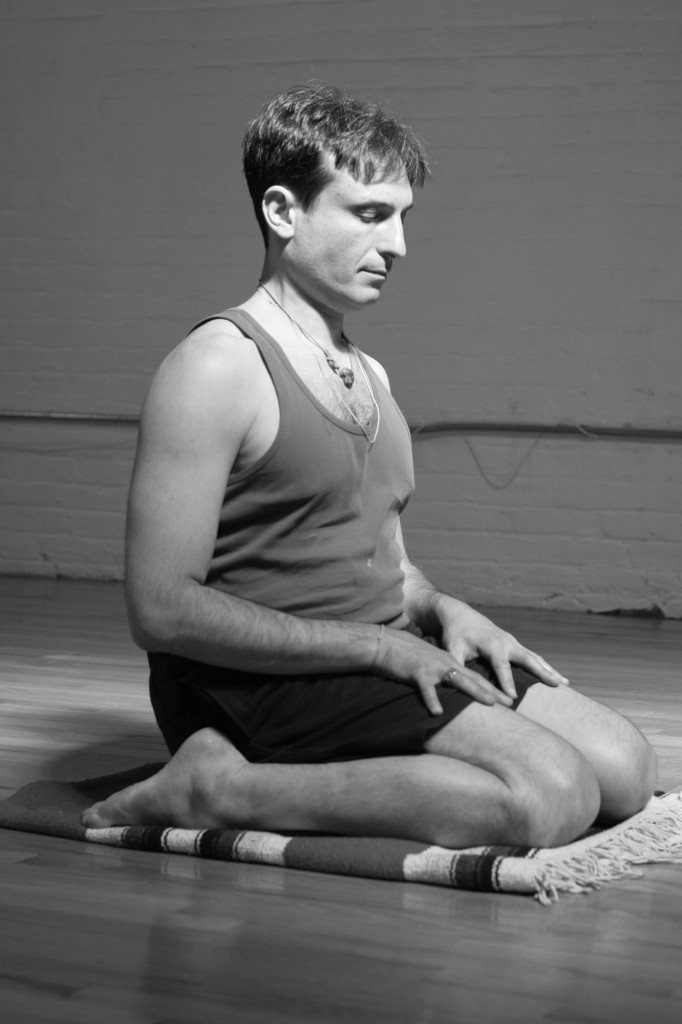5 Steps to Yoga-Based Meditation
- Published: Thursday, September 3rd 2015
- in Fitness
When we think of meditation, we usually think of sitting in a quiet space and quieting the mind to open up in new ways and bring a sense of calm. And, when we think of yoga, we think of holding postures, or asanas, breathing exercises, and sometimes, spirituality. David Michael Hollander, director of the Ananda Ashram Yoga Teacher Training program in Monroe, New York, takes both yoga and meditation and combines the two to incorporate each into the other.
 “Yoga-based meditation is rich with preparatory practices that allow meditation to happen naturally,” he says. “On a practical level, other types of meditation may have many similarities. There is the practice of sitting still and flowing the breath as in other forms, but yoga is philosophically rooted in the ancient Vedic tradition. Practices can include asana (physical exercise), pranyama (breathing exercises), mantras (meditative sounds), yantras (meditative images) and tantra, which is using your daily ordinary experiences to meditate.”
“Yoga-based meditation is rich with preparatory practices that allow meditation to happen naturally,” he says. “On a practical level, other types of meditation may have many similarities. There is the practice of sitting still and flowing the breath as in other forms, but yoga is philosophically rooted in the ancient Vedic tradition. Practices can include asana (physical exercise), pranyama (breathing exercises), mantras (meditative sounds), yantras (meditative images) and tantra, which is using your daily ordinary experiences to meditate.”
Meditation can help us make better decisions in our life, Hollander adds.
“It helps to develop inner resilience, balance and strength to survive the challenges of the 21st century,” he explains. “Yoga-based meditation provides a way to turn a stressful day or a situation of suffering into one of more equanimity and ease. People often practice meditation for a number of health-related purposes. It is not fully known what changes occur in the body during meditation; whether they influence health, and if so, how. Research is under way to find out more about meditation’s effects, how it works, and diseases and conditions for which it may be most helpful.”
Here, Hollander gives us a five-step how-to for yoga meditation – you can meditate in as little as five to ten minutes, or as long as an hour.
1. Prepare the Mind
Having a more philosophical attitude about life in general and one’s own actions in particular is the start of meditation. The yogic model for this is the yamas and niyamas. As background, yamas and niyamas are ethical precepts set forth in the yoga texts of Patanjali’s Yoga Sutras, and are specifically the first and the second of the eight limbs of yoga having to do with individual actions and world view or outlook.
Yamas is to have consciousness of individual actions in the world, such as things having to do with other people and beings, speech and thoughts as well as physical actions. The points for bringing awareness of in our own lives are:
- Non-harming
- Truthfulness
- Non-stealing
- Expansive – Pure intention
- Non-possessiveness
Niyamas has to do with our personal habits and bringing awareness to the relationship with one’s self. They include:
- Purifying your body and mind
- Cultivating an attitude of contentment
- Strong focus and ability to stick to a practice for a long time consistently
- Inner exploration and study.
- Letting go and bowing down to a greater universal reality
2. Prepare the Body: Asanas & Pranayama
In preparation for meditation, we engage in some type of warm up. One must move through physical practice, or asanas, connecting the breath with the practice or the movement. With asanas, we practice pranayama, a Sanskrit word meaning “extension of the prana or breath” or “extension of the life force.” Working first with the philosophical overview of life, moving into the asana and connecting to the breath is preparation. It is the path and the groundwork to meditation.
Example of a recommended warm-up asana practice:
- Sitting in sukhasana (easy pose), inhale, look up to the sky and lift the arms up;
- Drop the chin to the chest and breathe;
- Begin to engage fully in pranayama, breathing ujjayi breath (victorious breath);
- Inhale into the heart; exhale and release the belly;
- Take the hands behind your back and interlace the fingers opening up the shoulders;
- Exhale into a forward bend;
- Inhale sitting back upright, releasing the hands;
- Take the right hand to the left knee, for a gentle twist, focusing your gaze over the left shoulder; release and come back to center;
- Take the opposite twist, taking the left hand to the right knee, focusing your gaze over the right shoulder; release and come back to center.
3. Stillness Preparation: Pratyahara
The next step is to be still. The translation of pratyahara is “withdrawal of the senses.” In this path, this is the sitting part. We slow down and sit still either sitting in sukhasana, Sanskrit for “easy pose,” or upright in a chair. Sit for five minutes watching or “observing” the breath following each inhale, following each exhale.
4. Focus on an Object
Next, focus on a meditative object. This can either be something beautiful to look upon, or it could be actively chanting a specific mantra. Generally, some objects for focus may be a flower, a candle, a photograph, a mantra or a yantra, which is a symbol that represents aspects of the divine. All of these meditative objects are inspiring.
5. Meditation
Once we’ve moved through the preparation and all of the groundwork, we sit still and focus. “Meditation is just a break from doing anything, with no goal or real purpose at all; its just free time, no place to go, no where to be and no goals or needs,” Hollander says. “Its just pure love without a goal of any kind. When we finally forget about goals and needs and let go, then we begin to open up to practice. The preparation of the other practices leaves you free to just do nothing at all for a while. The mind quiets and we get a chance to feel our true selves which is beyond the transitory goals and needs.”
A beginner may start with a 5 minute practice, working their way up to 20 minutes. Eventually, one could work up to an hour. But more important than the actual length of time in meditation is consistency. A meditation practice should be consistent, at the same time every day, becoming a daily habit. The effects of meditating every day are much more powerful, even if it is brief, for 2 minutes, versus an hour-long practice, once a week. With regular, consistent practice, meditation helps us to become more sensitive and more receptive, to know ourselves.
“When beginning a meditation practice, one must remember, this is a gradual process; it cannot be rushed into,” Hollander points out. “It’s a circular path. We have to remember, as students, we are never beyond the yamas. Every time we return to the mat, every time we return in preparation for meditation, we always begin with the yamas.”
You might also like:
8 Enlightening Yoga Retreats
The Importance of “Me Time”
10 Wellness Tips to Live Your Best Life
Top 10 Spas for Yoga
Digital Detox: Slow Down & Un-Plug to Be Well
5 Healing Spa Treatments
Too Stressed to Meditate? Try These 6 Easy Tips!


